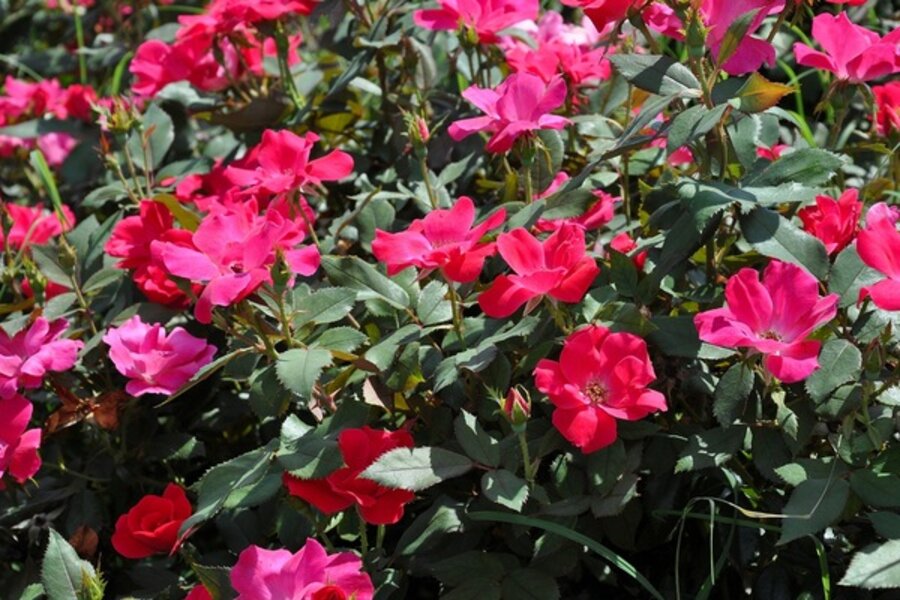How to grow roses from seed
Loading...
With few exceptions, the roses we know and love today start life as a humble seed. Each one that grows produces a completely unique flower, and no one can accurately predict whether it will be a winner or a dud.
Hybridizer Bill Radler had been working for 15 years to develop a new line of disease-resistant, easy-care roses. Little did he know that the solitary seed harvested from a single hip from a straggly bush he almost trashed would grow up to be the now-famous Knock Out.
Of course, professional hybridizers have the edge on amateurs when it comes to producing a really special rose. The process is tedious, lengthy, and painstaking. Roses are cross-pollinated, hips are allowed to form, and the resulting seeds are planted and closely observed.
Then comes more cross breeding, more hips, more seeds, and, for the most part, disappointment.
For example, every year the folks at David Austin English Roses plant approximately 150,000 seeds. After several years, most of the seedlings will get the thumbs-down for one reason or another (Mr. Austin still makes the final decision.)
In time, perhaps three to five roses from the original planting will ever make it into commerce. Now I’m no math genius, but the odds of coming up with a keeper seem pretty low to me.
Is the next Peace rose in your garden?
Most of us don’t have the expertise or inclination to set up a proper rose hybridizing program, but it’s still fun to plant a few seeds and see what happens.
Just stop deadheading your plants in late summer and let the volunteer pollinators take over. Let the bees do their thing and hope that soon fruit, or hips, will begin forming on your bushes.
After the hips turn red or orange and are fully ripe, bring them in to harvest the precious seeds inside.
Giving seeds the water treatment
Although you’ll probably never pinpoint the “father” of your new rose, you should know the female parent, so keep each group of hips separate to identify later.
Cut the hips open with a knife, remove the seeds, wipe them clean, and drop them in a glass of water. Old timers say seeds that float won’t germinate as well as those that sink.
Discard the floaters and wrap the remaining seeds in a handful of moist vermiculite or peat moss -- even damp paper towels can work. Place the mix in a plastic zip bag and write the name of the seed parent on the outside of the bag with an indelible marker.
Seeds need cold temperatures to initiate the germination process, so place all the bags in the veggie crisper drawer of your fridge for about 60 days. Mark your calendar so you know when it’s time to take them out.
Countdown to bloom time
There are many ways to plant the seeds once they finish their "winter’s nap." I’ve sown mine under grow lights in cheap plastic shoeboxes with a couple inches of sterile soil. Plant seeds about one-fourth inch below the soil surface.
Make sure indoor temperatures are at least 70 degrees F. (21 degrees C) and keep the lights on for about 16 hours daily.
In areas of the country where spring temperatures are above 70 degrees F. at that point, you can plant them in flats and set them outside. Whichever method you try, be sure to keep the soil moist, but not dripping wet.
When the seedlings begin to grow, the first two leaves that appear are cotyledons. The next leaf will look like a rose leaf. Amazingly, many of these seedlings will flower in as little as 5 to 6 weeks, although some take a full season to bloom.
If you like what you see when your seedling does bloom, carefully transplant the new rose into a separate pot. Within three years you should have a fully mature bush and a never-before-seen variety.
It may never achieve Knock Out status, but since you grew it, I promise you will love it.
PSSSST: The new rose catalos are just arriving in the mailbox. Which varieties are must-haves for 2011? Stay tuned for a sneak preview.
-----
Lynn Hunt, the Rose Whisperer, is one of nine garden writers who blog regularly at Diggin' It. She's an accredited horticultural judge and a Consulting Rosarian Emeritus for the American Rose Society. She has won dozens of awards for her writing in newspapers, magazines, and television. She grows roses and other plants in her garden on the Eastern Shore of Maryland. To read more by Lynn, click here.You can also follow her on Twitter.





